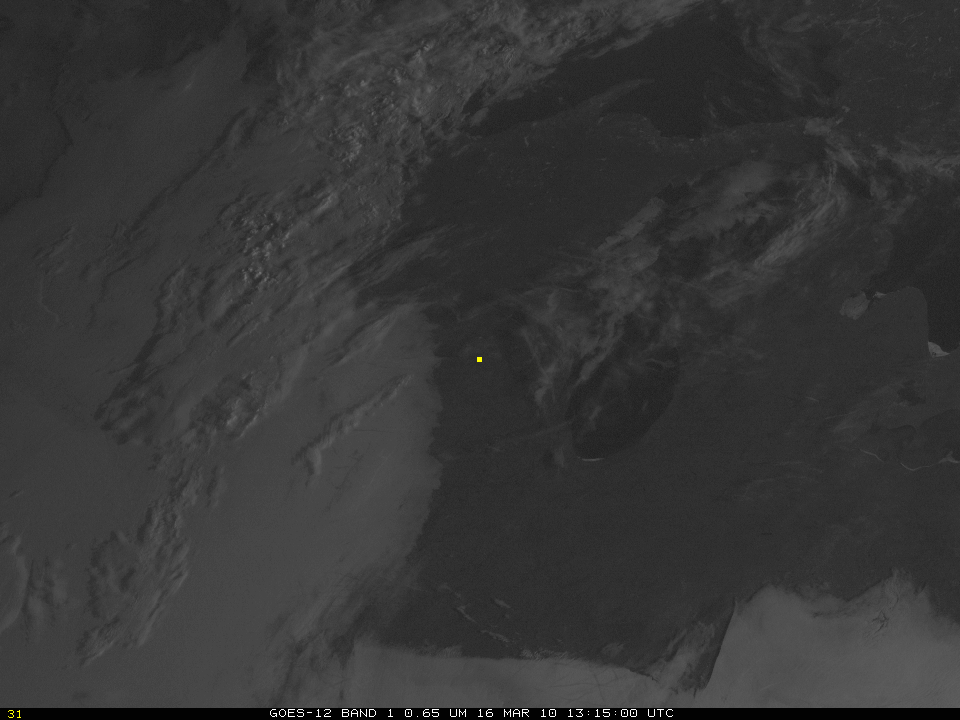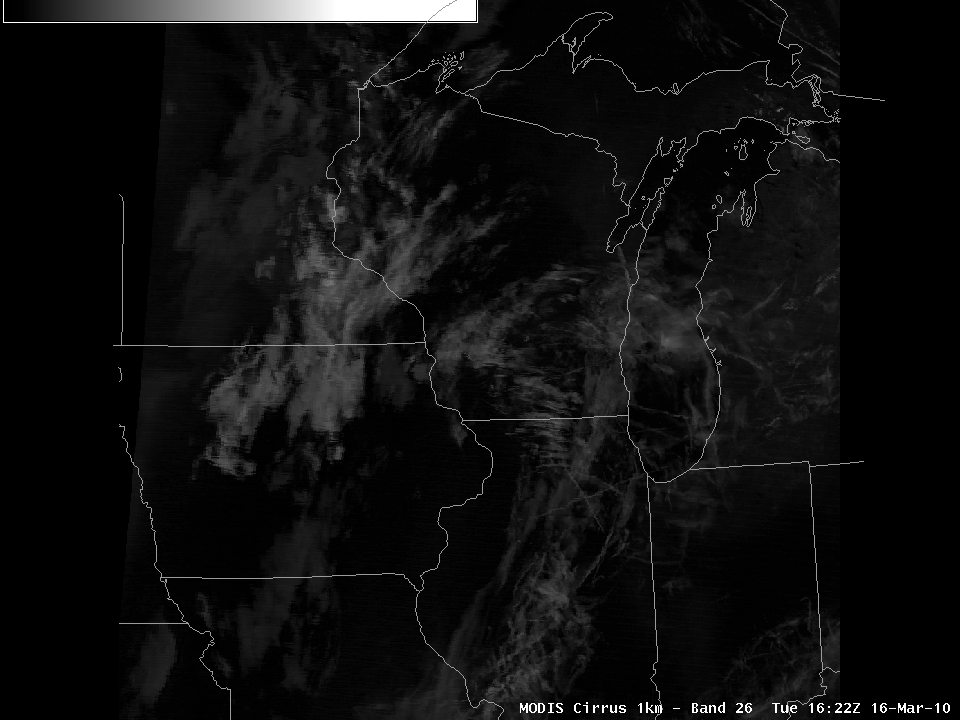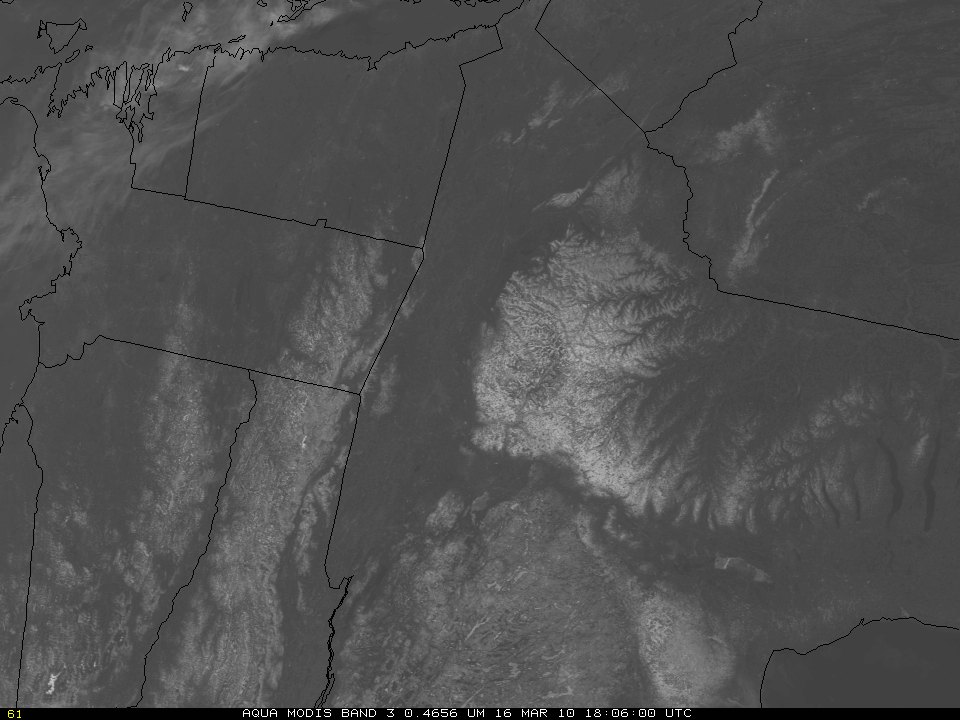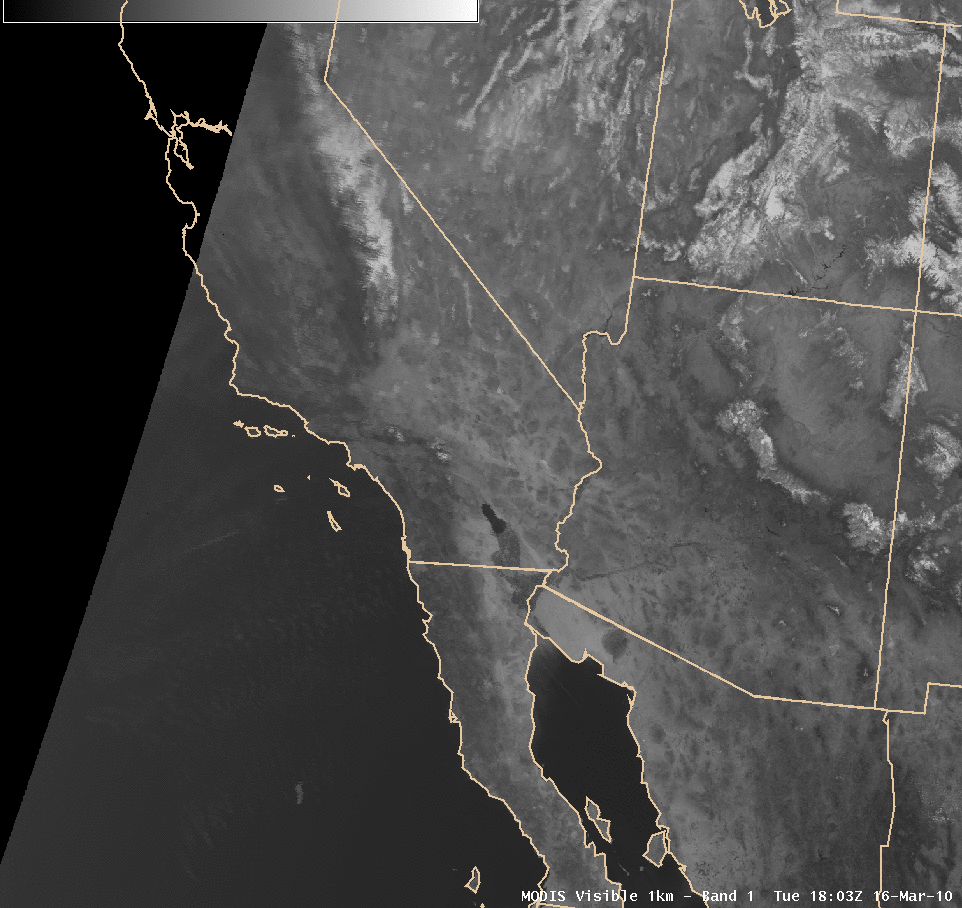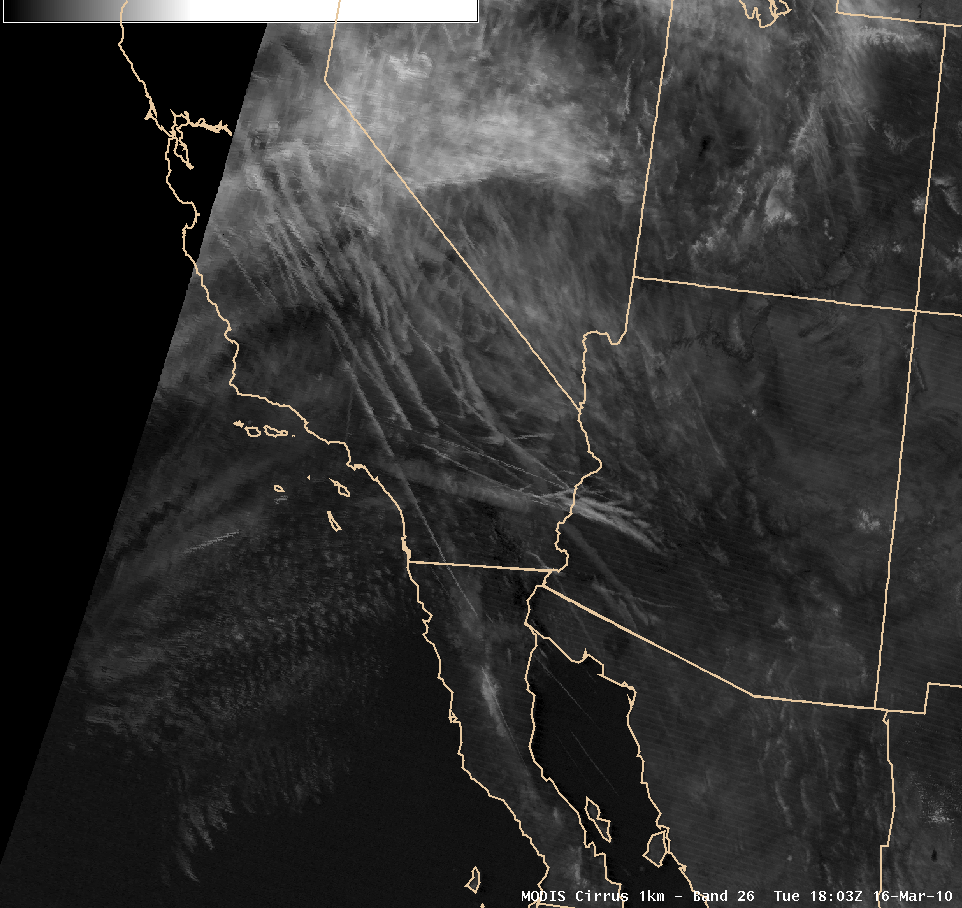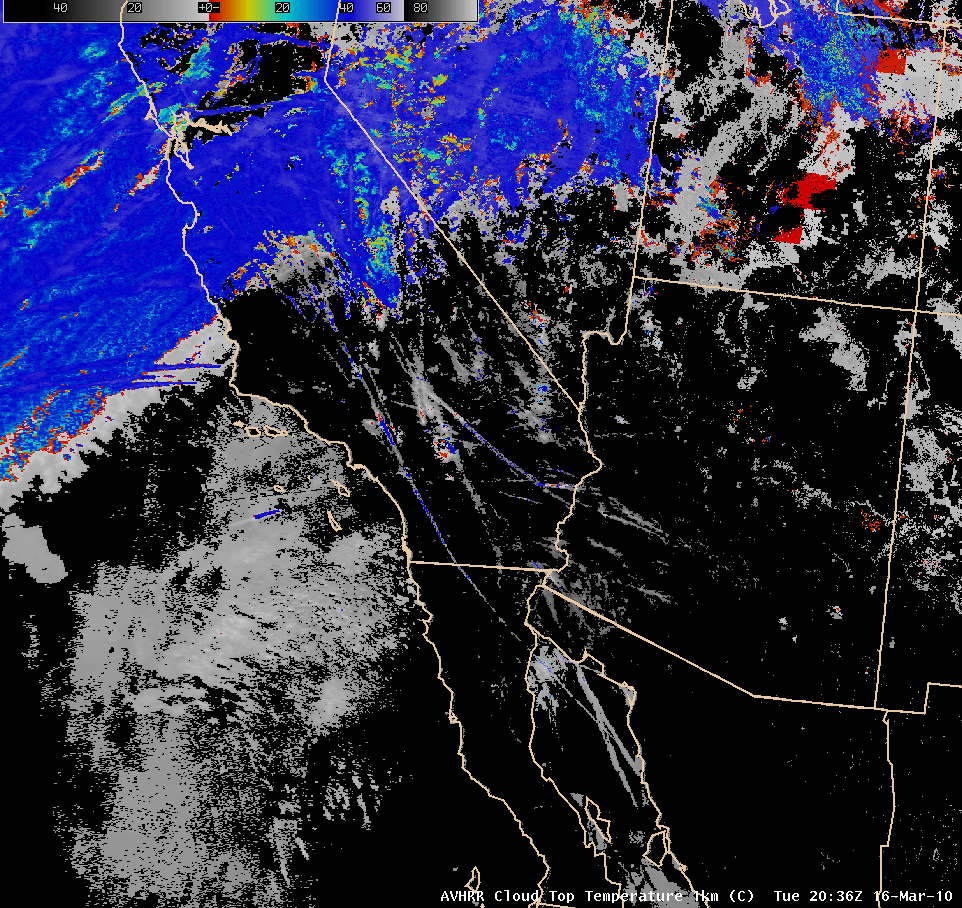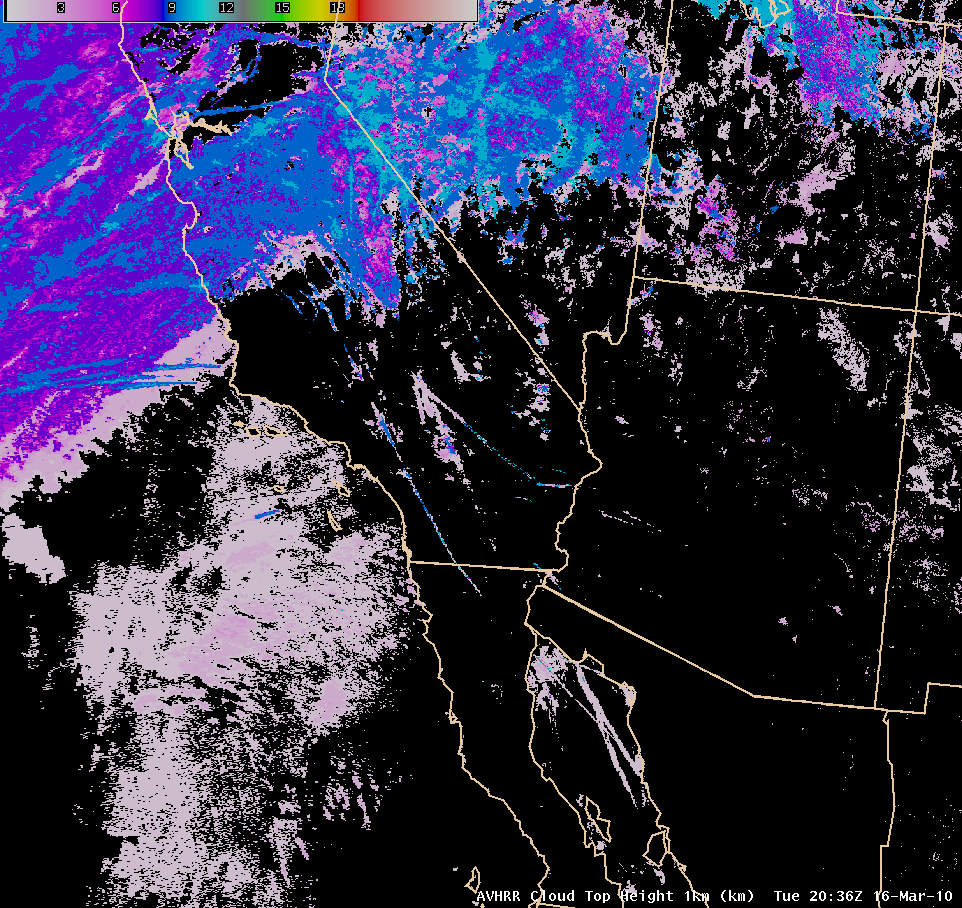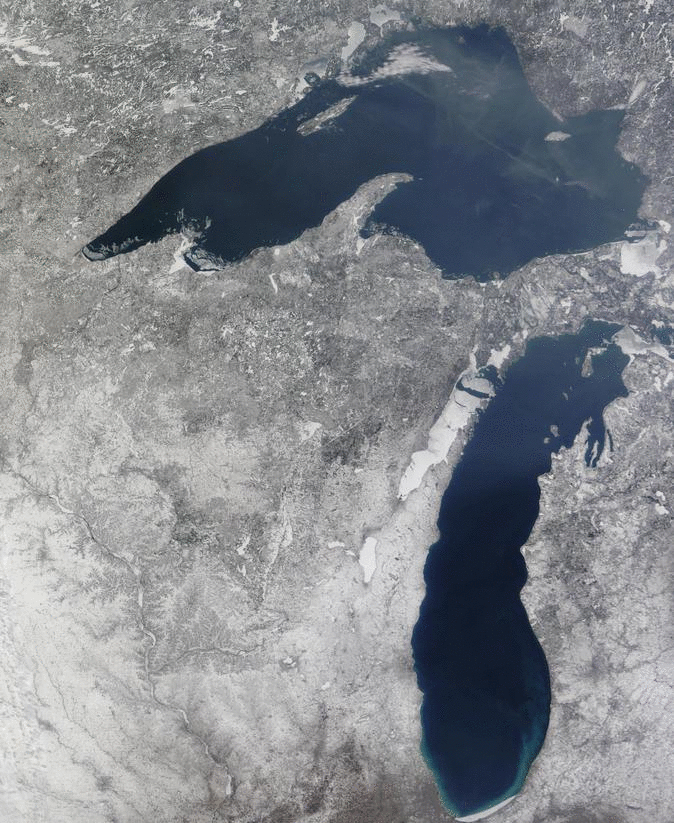The visible imagery loop from GOES-12, above, shows cirrus clouds around southern Wisconsin at 1315 UTC on 16 March (1st image in loop), and at 2215 UTC on 16 March (last image in loop), but relatively few at 1615 UTC (middle image). In contrast, the infrared imagery loop (here), indicates cirrus clouds increasing throughout the day; Brightness temperatures associated with the cirrus over southern Wisconsin are fairly warm — near 270 K — because energy from lower in the atmosphere was able to pass through the cirrus clouds, adding to the radiance emitted by the cold cirrus clouds.
Ground truth from Madison (the yellow dot in the visible and 11 micron loops) from a Tower Camera looking west at 1322 UTC, 1619 UTC (Note also the excellent example of a contrail shadow in this image) and 2224 UTC, and looking north at 1324 UTC, 1624 UTC and 2223 UTC all show similar amounts of cirrus cloud coverage.
Cirrus is difficult to detect because backscatter of radiation from the ice crystals can be limited. Indeed, the 1322 UTC Tower Cam image looking west (here) appears to show little cirrus because visible radiation from the sun rising in the east is not effectively scattered backwards by the cloud. The same thing is happening in the visible satellite imagery at 1615 UTC: apparent clarity in the visible occurs because backscatter from cirrus of solar radiation is small. The 11-micron image from the same time shows clouds over southern Wisconsin, but with warm brightness temperatures.
Although Cirrus clouds do not backscatter visible solar radiation effectively, they do very effectively backscatter radiation with wavelengths near 1.38 microns. Furthermore, radiation with a wavelength of 1.38 microns that is emitted by the Earth is strongly absorbed by water vapor. Thus, the largest signal is from solar radiation reflected off cirrus clouds. The MODIS instrument, aboard both Terra and Aqua satellites, detects radiation at 1.38 microns, and the image for 1622 UTC is shown below. Cirrus clouds are indicated over southern Wisconsin, and also over lower clouds over eastern Minnesota and Iowa. The ABI instrument, to be aboard GOES-R when it launches, will also detect radiation at 1.38 microns.
View only this post Read Less


